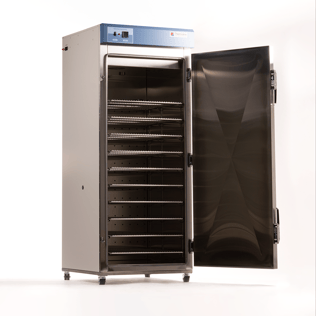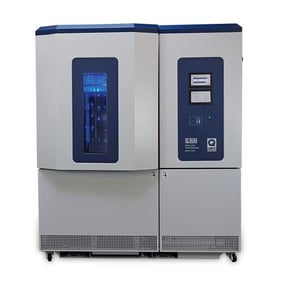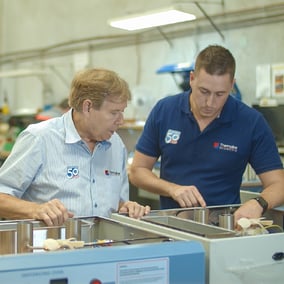
Macadamia nuts, renowned for their rich, buttery flavour and creamy texture, are a prized delicacy enjoyed worldwide. However, before these delectable nuts reach our tables, they undergo a crucial process of drying.
Drying is vital in the post-harvest handling of macadamia nuts, ensuring their quality, flavour, and shelf life. In this article, we will explore the art and science of macadamia drying and its significance in bringing out the best in these delightful nuts.
Thermoline's part in the process is offering specialised ovens to help with the sampling nut-in-shell and kernel recovery evaluation. Thermoline has worked with produces to provide an oven suitable for their testing.
Understanding Macadamia Drying:
Macadamia nuts are harvested from the trees in their protective green husks. Before they can be consumed or processed further, the nuts must be separated from the husks and dried. Drying macadamia nuts involves reducing the moisture content to an optimal level, typically around 1.5% to 2.5%. Proper drying prevents mould growth, rancidity, and other issues that can negatively impact the nuts' taste and quality.
The Macadamia Drying Process:
1. Harvesting and Husking:
Macadamia nuts are usually harvested when they naturally fall from the tree. Once harvested, the green husks are removed, revealing the hard inner shell containing the edible kernel.
2. Pre-Drying:
After husking, the nuts may still contain residual moisture, which could lead to mould growth during storage. Pre-drying involves laying out the nuts in a single layer to allow excess surface moisture to evaporate.
3. Forced-Air Drying:
The primary method of drying macadamia nuts is through forced-air drying. The nuts are placed in specialised drying bins or trays during this process. Heated air is blown over the nuts, promoting moisture evaporation. The temperature and airflow are carefully controlled to ensure gentle and uniform drying, preserving the nuts' quality.
4. Final Drying:
After the initial drying, the nuts are usually stored briefly to allow the moisture within the nuts to redistribute evenly. This resting period ensures the nuts dry uniformly, avoiding over-drying or under-drying.
5. Moisture Testing:
Regular moisture testing is conducted throughout the drying process to monitor the nuts' moisture content. This critical step ensures the nuts reach the desired moisture level for optimal storage and flavour.
The Science Behind Macadamia Drying:
Drying macadamia nuts is both an art and a science, as achieving the perfect result requires a delicate balance of time, temperature, and airflow. Several factors influence the drying process:
1. Moisture Content:
The moisture content of macadamia nuts plays a pivotal role in determining the quality and shelf life of the final product. If the nuts are not adequately dried, they can become susceptible to mould growth, spoilage, and rancidity. On the other hand, over-drying can lead to a loss of flavour and texture.
2. Airflow and Temperature:
Proper airflow and temperature control are essential to avoid uneven drying and remove uniform moisture. Gentle and consistent airflow allows moisture to evaporate evenly from all sides of the nuts, preventing the formation of wet spots.
3. Drying Time:
The drying time depends on several factors, including the initial moisture content of the macadamia nuts, the drying method used, and the ambient humidity. Monitoring the drying time closely helps achieve the desired moisture level and prevent over-drying.
The Art of Macadamia Drying:
Macadamia drying is a scientific process and an art perfected by experienced growers and processors. The art lies in the knowledge and expertise of knowing when the nuts have reached the optimal moisture content for peak flavour and quality. Experienced growers rely on their senses and years of experience to determine the ideal drying time, recognising the subtle changes in colour, aroma, and texture that indicate readiness.
Conclusion:
Macadamia drying is critical in transforming raw macadamia nuts into the delightful and cherished delicacies we know and love. By expertly balancing the science of moisture content, airflow, and temperature with the art of experience and intuition, growers and processors bring out the best in these delectable nuts. The careful and precise drying process ensures that macadamia nuts retain their signature flavour, creamy texture, and nutritional value, delighting taste buds worldwide. So, the next time you enjoy the unique taste of macadamia nuts, take a moment to appreciate the craftsmanship and dedication that went into drying these extraordinary treats.
Please contact the Thermoline sales team for any enquiries and questions.






